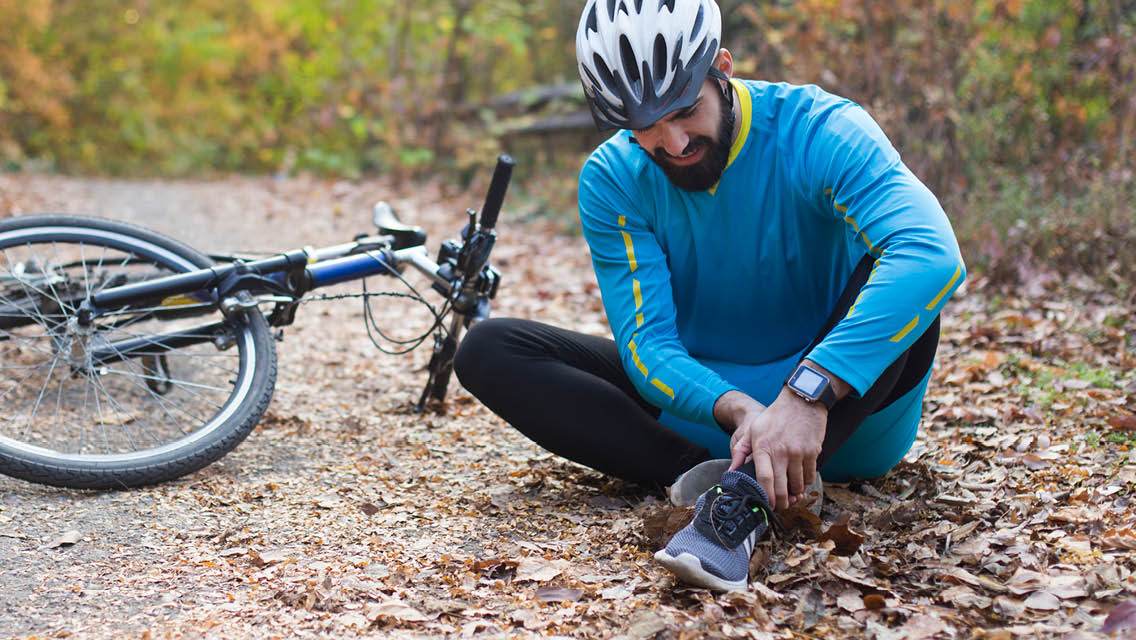Falling is part of life. Whether tripping over a pet or uneven pavement, tumbling off a bike, slipping on ice, or wiping out while skiing, unintentional falls can occur at any age and are a leading cause of injury-related ER visits.
What you can learn to avoid — or at least minimize — is getting injured. Training agility, coordination, and multiplanar movement can build resilience in the event of a fall. And learning how to fall safely can help you react quickly when you do take a tumble.
“If you have to go through the thought process of I’m tipping backward — what do I do?, you’re too late,” says Dan Kirkpatrick, PT, DPT, NCS, a board-certified clinical specialist in neurological physical therapy with Motion Physical Therapy in Minnesota.
Just knowing the right way to fall isn’t enough, he says. Building muscle memory and creating a new, safer default reaction in the event of a fall requires repetition.
In other words, you have to practice falling — and practice often.
The Basics
There are several key principles to falling safely, though some go against our instincts. For instance, many of us naturally become rigid when we lose our balance. However, allowing our bodies to relax helps us better absorb the impact.
“Don’t stiffen up,” says Olivia Freeman, CPT, a personal trainer and football player with the Atlanta Rage. “When we tense up, it typically makes the impact worse.”
Keep these tips in mind in the event of a fall:
- Lean in. You have some control over the direction of your fall, so lean your weight forward and to the side, if possible. Aim toward grass, dirt, sand, or snow and away from concrete, obstacles, and sharp objects.
- Stay loose. Bend your arms and legs, and never try to catch yourself with your hands with straight arms. Try exhaling through your fall to encourage a relaxed frame.
- Protect your head. If you’re falling forward, turn your face to the side and try to shift your weight sideways to roll onto a shoulder. If you’re falling backward, tuck your chin to your chest to avoid hitting your head on the ground.
- Aim for the meat. Landing on a meaty part of your body, like the muscles of your back, butt, or thighs, can help protect your tailbone, hips, knees, elbows, and wrists. If you’re falling straight forward or backward, try to turn your body to land on your side.
- Roll with it. Rolling into the fall is a good technique to help spread the impact over more of your body and avoid concentrating the impact on just one area.
- Slap out. If you’re falling backward or sideways, try extending your arms to the sides with palms down and slap the ground. This can help fight the instinct to catch yourself with your hands or elbows while also helping you position and brace for impact. This isn’t a requirement for a safe fall, but it can be helpful with practice.
Fall Practice
To put these principles into practice, functional-fitness specialist Ryan Hurst offers three techniques: falling backward, falling forward, and falling sideways.
“Falling can be scary no matter when and where you are,” says Hurst, the head coach and program director of GMB Fitness. “If you’re unprepared, it can have devastating consequences. The good news is the body is really good at adapting when you train it to do something, so if you practice these techniques often, you’ll be much better prepared if and when an unexpected fall happens.”
Hurst, a former competitive gymnast and martial artist, recommends adding these techniques to your warm-up whenever you can. “It’s going to make a big difference in protecting you from future injuries.”



